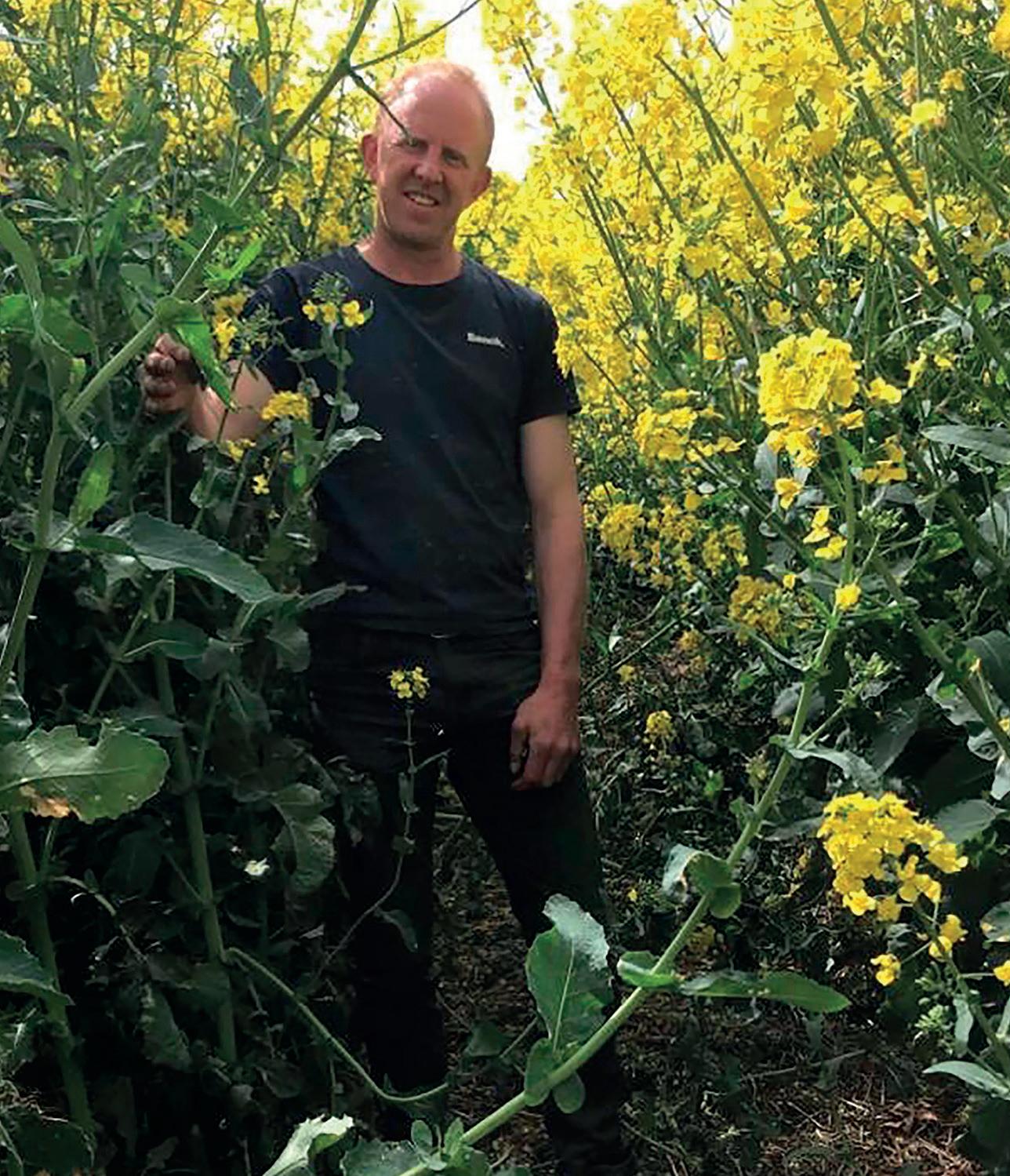
6 minute read
Non-triazole LLS control option proving its worth
Fears that growers could lose control of light leaf spot (LLS) because of a reliance on triazole fungicides have for a long time concerned agronomists.
There is no suggestion that triazoles – principally tebuconazole and prothioconazole – are declining in efficacy but being reliant on a single mode of action for control of a major disease is less than desirable.
It should not, therefore, come as a surprise that a strobilurin-based fungicide containing two forms of plant growth regulator has been welcomed by advisers.
Containing mepiquat + prohexadione calcium + pyraclostrobin, Architect is principally aimed at light leaf spot, though manufacturer BASF also claims activity against phoma.
Perhaps just as importantly, it offers an alternative mode of action to triazoles, thereby helping growers observe resistance management guidelines.
Will Foss, Agrii technical manager for combinable crops, says: “The situation was undeniably high risk.
“Light leaf spot is arguably the biggest disease threat facing oilseed rape crops and we are worryingly reliant on triazoles for control. For what is the most widely grown break crop in Great
Britain, this is a precarious situation to be in,” he says.
Granted regulatory approval in
August last year, Architect has been A new fungicide for oilseed rape brings alternative chemistry to the disease control toolkit. Arable Farming reports.
Non-triazole LLS control option proving its worth
in Agrii trials since 2019, during which time it has delivered better light leaf spot control than the company’s standard-setter, Kestrel (prothioconazole + tebuconazole). Phoma control has been broadly similar, while yields and margin over input costs (MOIC) have, on average, been higher.
“Kestrel is still a strong product delivering good disease control, but on balance Architect plus a water conditioner pips it.
Crop physiology
“The amount of light leaf spot in the canopy post-application was roughly half that of the Kestrel. The inclusion of a PGR is a bonus. We have seen good crop physiology from its use and this has come through in the yields,” adds Mr Foss.
As well as establishing its disease control credentials, Agrii trials investigated application rates and spray timing to get the most from the product’s combination of properties.
“Application timing is important; the plant needs to be actively growing to maximise PGR activity. The typical Kerb Flo [propyzamide] timing of late October/early November would be too late to achieve this, although disease control would still be very effective,” says Mr Foss.
“It also needs a water conditioner, preferably in the form of a true collating agent, to support the PGR,” he adds.
Applications can be split between the autumn and spring or two sprays in spring. The maximum label rate for each application is two litres per hectare. In Agrii trials, a half rate application in autumn with a follow-up in spring, also at half rate, has delivered the biggest margin over input costs.
“With oilseed rape at £600/ tonne, Architect produced an additional £65.64/ha in margin over Kestrel. This is principally a result of the yield advantage and value of oilseed rape,” says Mr Foss.
For Oliver Fairweather, Agrii agronomist covering the south of England, Architect offers a strategic means of managing canopy development ahead of winter.
Key points
Effect of fungicides on light leaf spot infection Effect of fungicides on yields and MOIC
rNew fungicide combines good light leaf spot activity and PGR to promote better crop physiology and increased yields rPhoma control is on a par with that of other products rA much-needed alternative to triazole fungicides
5
Light leaf spot infection (% leaf area affected)
4.5
4
3.5
3
2.5
2
1.5
1
0.5
0
SOURCE: Agrii, average of 13 trials 2019-22 4.8
4.7
Yield (tonnes/hectare)
4.6
4.5
4.4
4.3
4.2
4.1
4.0
SOURCE: Average of 13 trials 2019-22. Assumes oilseed rape at £600/tonne.
4.71
4.59
4.28
MOIC £234.89/ha MOIC £169.25/ha
In the field Mark Atkin, ECB Farming, Bourton-on-the-Water
JFor Cotswolds grower Mark Atkin, of ECB Farming, Architect served to reduce the number of spray passes.
“It amalgamated several passes as well as doing the job we expected it to do. The crops have been clean of light leaf spot and it showed at harvest. The crop has already left the farm and while all our crops have done well, I am especially happy with the 4.2 tonnes per hectare the Rocca HEAR OSR has delivered,” says Mr Atkin.
“For a crop sown on 75cm rows at a seed rate of 2-2.5kg/ ha and 125kg/ha DAP at drilling, this is more than respectable.”
The crop was drilled early, in the first week of August, partly as there was moisture at the time and experience has taught him that Cotswold brash soils quickly lose moisture. Early sowing is part of a plan to see the crop established before cabbage stem flea beetle has the chance to inflict its damage.
“We recognise that sowing early increases the risk the crop will be forward of where we would otherwise like it to be going into winter, but we work on the basis that we can handle that later. We decided to give Architect a go and it has proven worthwhile,” says Mr Atkin.

Cotswolds farmer Mark Atkin in a crop of Rocca HEAR oilseed rape which averaged 4.2 tonnes/hectare this harvest.
“My crops tend to be hybrids and are often early sown. I advised it on all my forward crops and I have been impressed with its performance. The disease control has been excellent and none of my customers’ crops have lodged.
“For me it has replaced Toprex [difenconazole + paclobutrazol] + prothioconazole at the spring timing. Sprayer operators too appreciate it as it is only one can of product to add to the spray tank,” Mr Fairweather adds.
Transforming Innovation
Making Connections
CHAP provides the tools, expertise and solutions to help accelerate agriculture’s journey to net zero, and further enhance sustainable farming practices. • Establish networks to promote opportunities in sustainable agriculture • Make connections needed to help demonstrate on‑farm value of regenerative agriculture • Address environmental concerns through applied agri‑tech innovation • Support growers in accessing R&D funding

chap-solutions.co.uk
| @CHAPAgriTech































